Winner of the 2023 WLA Awards – Honour Award in the Built Small Design category
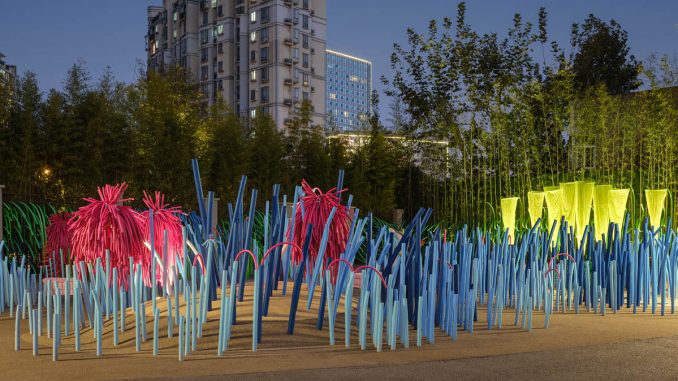
“In this experimental garden, we have intended to plant a seed which would self-grow and bear the unique fruit rooted in local community without too much designers’ presupposition and intervention.”
-FLO
Symbiotic relationship between people and nature is critically important in many ways. A natural forest incubates opportunities of life, and the project – Bamboo Forest Garden, incubates new interactive opportunities for the local community.
The design team was responsible for the ‘Design and Build’ of the 500 sqm outdoor playground during SUSAS Shanghai Urban Space Art Season. It is a public exhibition project that lasts for 2 months. The designers were only given less than 6 months from design to completion, and a very limited budget. Under these challenging circumstances, the design team asked themselves – How to realize the project through innovative exploration and experimentation? The answer was to ‘Imagineer’ it.
IMAGINEERING = Imagination + Engineering
Through the imagineering process, the designers have been open to the maximal possibility in this small-scale site and lead teams to create a nature-like refuge in the concrete jungle that we’re living in. In the end, the project becomes far more than just an installation itself, but also an experimental showcase of human-nature dialogue that explores the abstraction of organic mutualism in the art of living together.
THE IMAGINEERING PROCESS:
1.Limited Brief x Limitless Collaborations
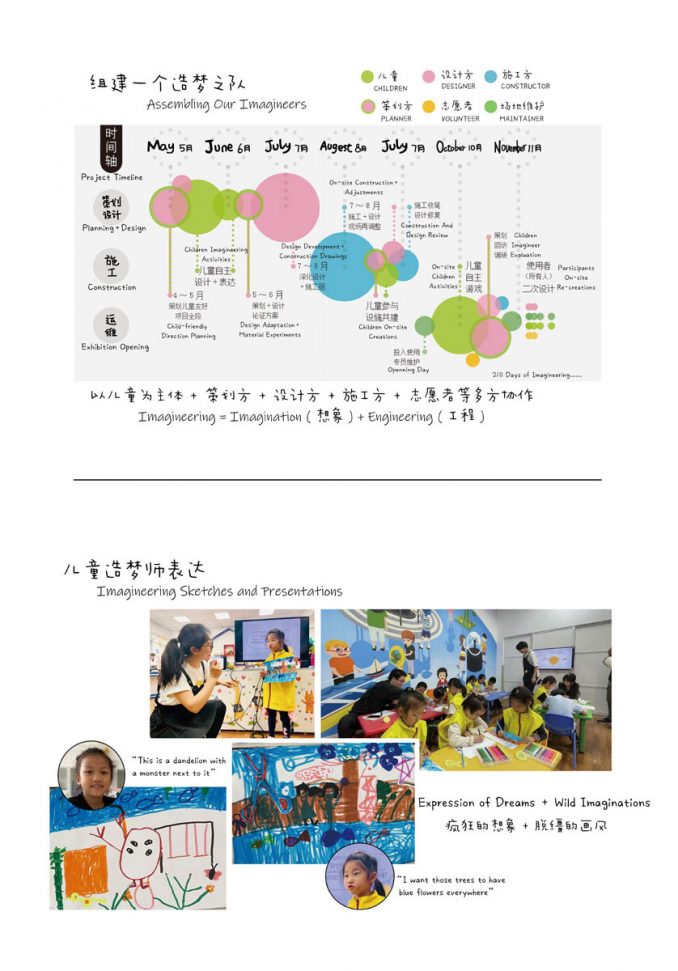
In this project, the designers took the opportunity to integrate the collaborative practices of Imagineering. Due to the short lifespan of the exhibition, they hope the project can be child-friendly in which community children can participate during the entire process of its realization. Centered around children imagineers that the designers recruited, they also assembled a team of planners, builders, and volunteers. The design team organized activities to facilitate the imagineering process. Through workshops and on-site activities, they successfully attracted more volunteers and visitors from local areas to continuously cooperate on the project.
2.Limited Space x Limitless Imaginations
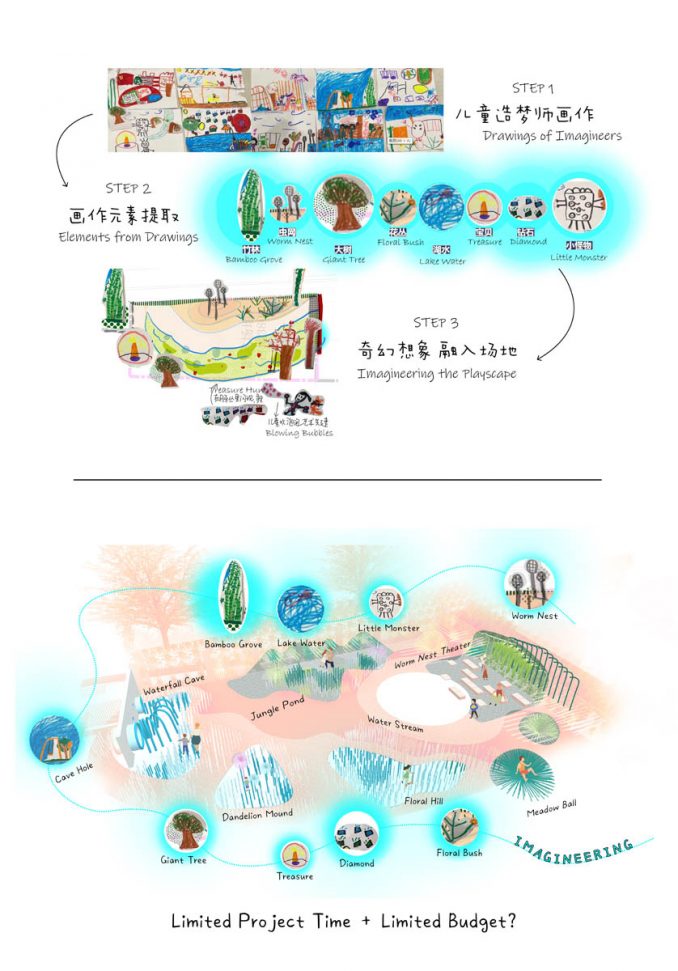
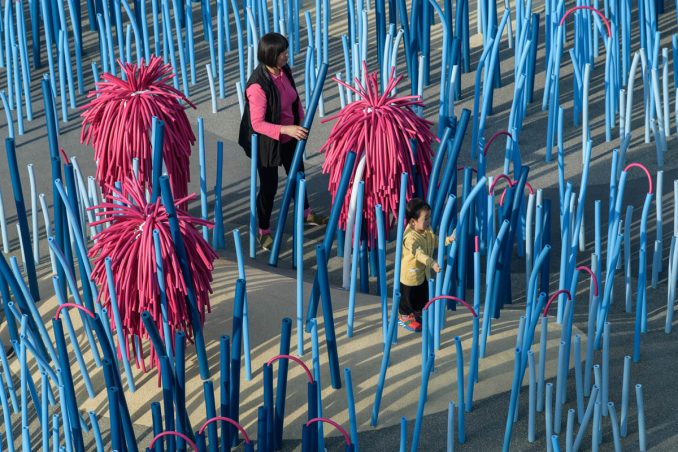
From the beginning, the designers want children to voice their desires and eventually become the real owners in creating the playground. The designers need to gather their opinions to ensure the greatest open-endedness and the best incubation of possibilities. They obtained their ideas through their paintings. Those abstract elements and stories were eventually transformed and weaved into the spatial narrative of the project. The outcome reflects the wild imaginations of children imagineers. During the process, the designers narrowed down their ideas and grouped them into themed spaces such as Moon River, Little Grove, and Exotic Floral Hill. These themed spaces had grown from the existing bamboo grove next to the site and been shaped by the bamboo-like Modules.
3.Limited Schedule and Budget x Limitless Modules
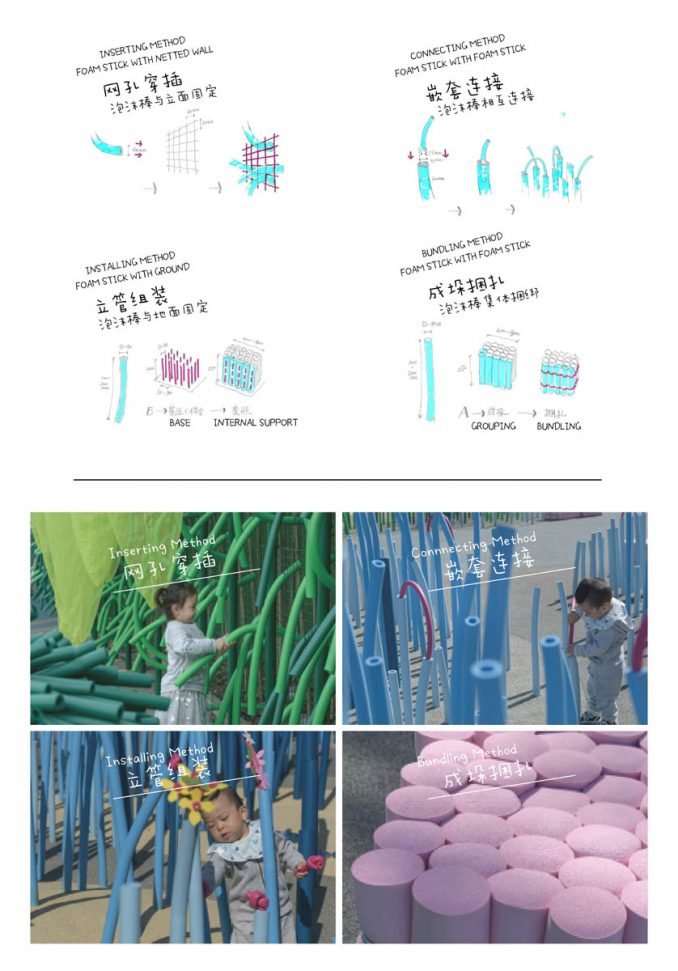
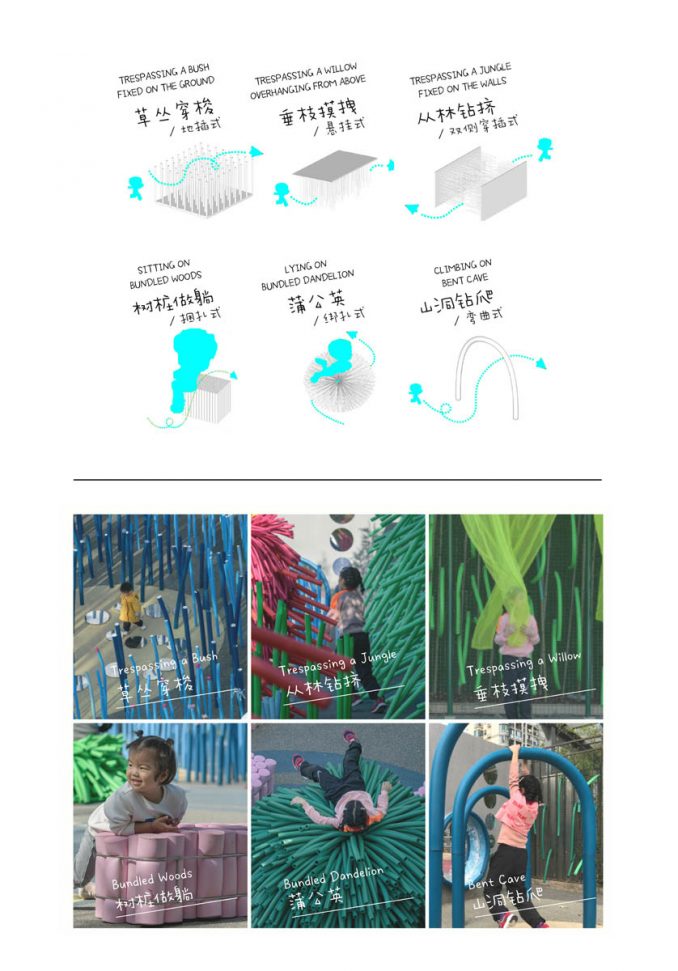
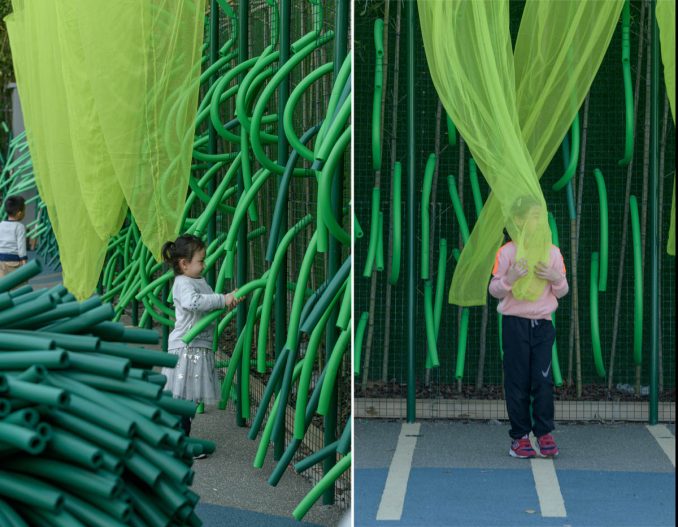
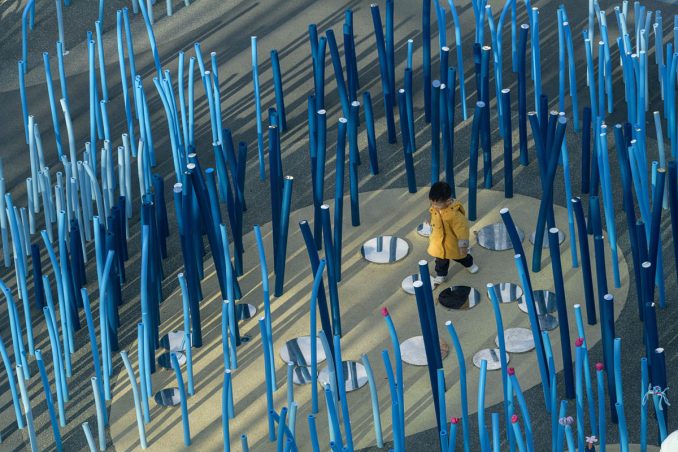
While fantasizing the best of things, the designers must also balance their relationship with the reality of constraints. They require a pragmatic approach to ensure that ideas can be materialized. After a series of material studies, they have selected foam sticks as the material to create the interactive experience and the nature-like space. The foam sticks are safe, low-cost, and recyclable. They are also elastic and colorful, making them particularly suited as props for children to play, paint, and create during the workshops. Based on the characteristics of foam sticks, the designers experimented with assembly strategies of the modules to create rich experiential qualities through variation of colors, densities, and heights. This extra dimension of interactivity through material selection further facilitates the creative process of the children imagineers’ participation.
4.Limited Exhibition Time x Limitless Life Cycles
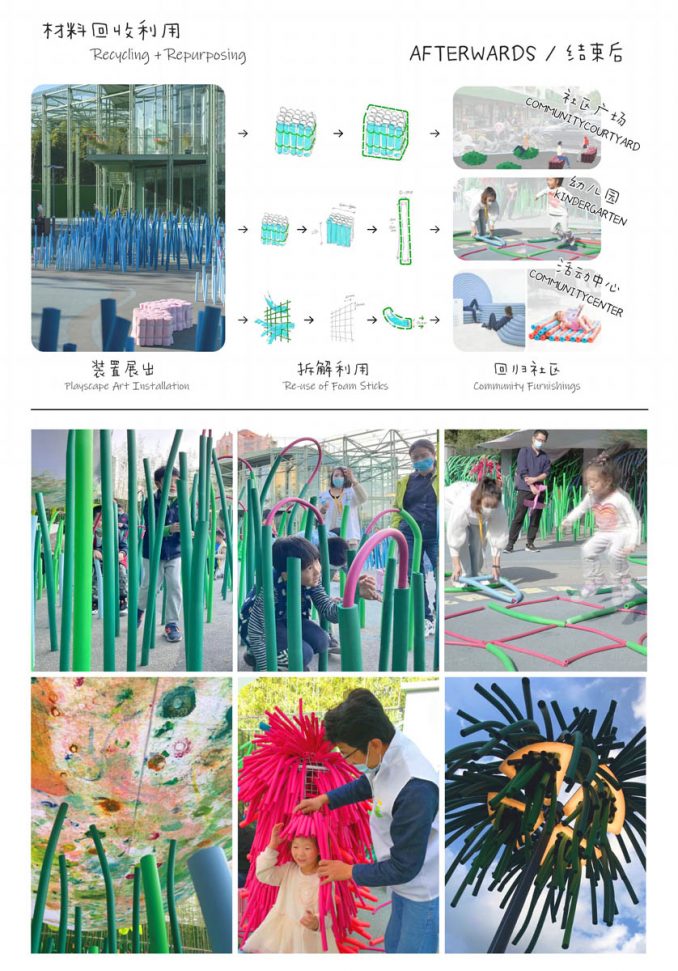
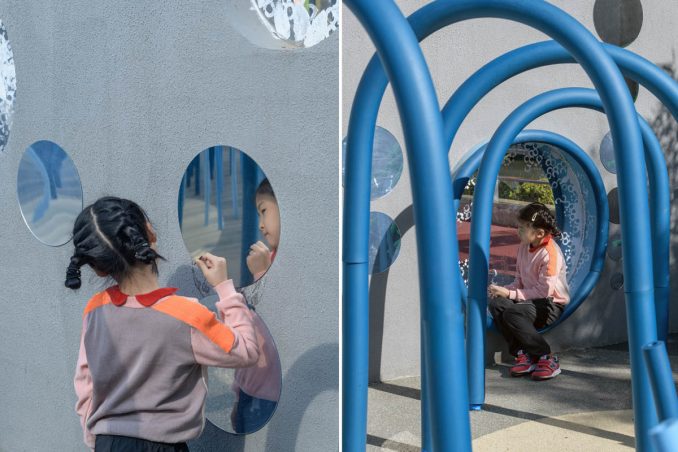
Hands-on experience is an important process of imagineering. Through crafts-making workshops, the children team used foam sticks to whimsically “plant” flowers. Not only did the children make them, but their parents also participated together. Their works were installed and displayed in the playground. After the opening of SUSAS, events were organized to provide opportunities for on-site re-creations. All the children who visited the playground became active participants in the re-creation of the “Bamboo Forest Garden”. A children’s appraisal event was also organized on site. These children’s team greatly understand how their initial concept was transformed into the actual design. They could express their comments and emotions based on their observations. Their understanding of practical challenges is also surprisingly high for their age. With environmental awareness in mind, foam stick recycling solutions were devised that could repurpose them into play furniture for use by local kindergartens and neighborhood committees after the festival’s end.
THE IMAGINEERING TEAM
Through collaborative efforts and constant dialogue of ideas, the design team was able to unite everyone into one common goal and turn it into reality. It was a fulfilling process where they were challenged to constantly find ways to balance different voices and opinions, ensuring the best diversity and inclusiveness. The ultimate aim was to bring positive inspiration and joy to all participants involved.
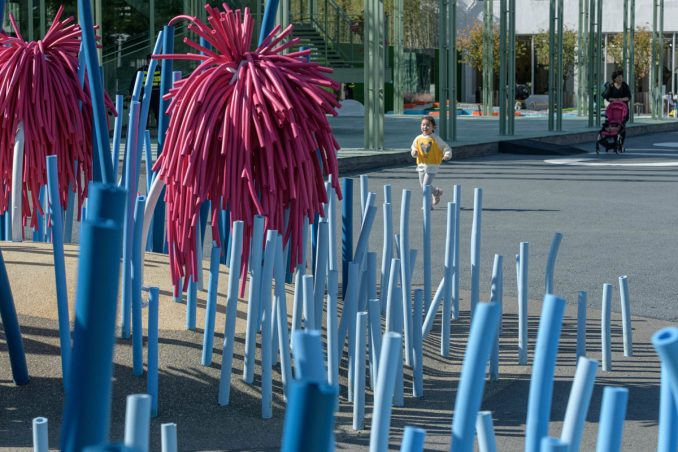
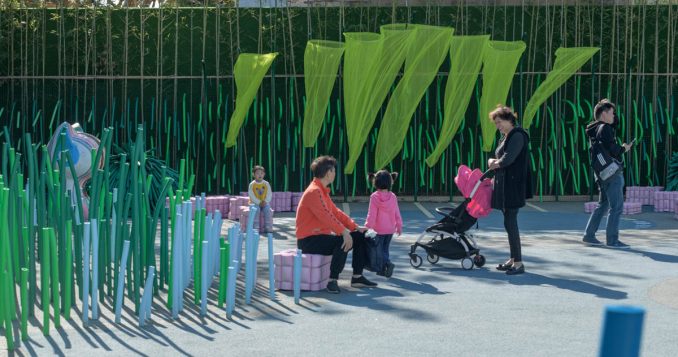
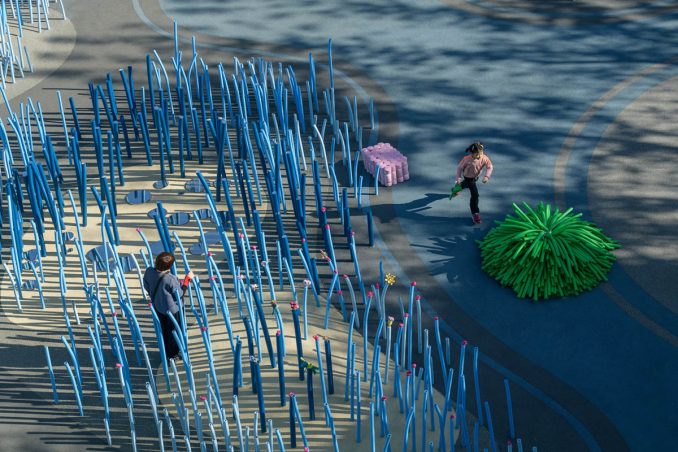
Bamboo Forest Garden Installation Playscape | FLO
Designer: FLO
Project Planning: SATUN Design
Children’s Team: Chu Junyuan, Lu Yucheng, Chen Zongmo, Yin Yuchen, Cai Wenxuan, Luo Zhenxuan, Bi Xiaoya, Dang Fuxi, Ge Jialing, Liu Ruochen, Wu Zhongtian, Fu Moyi
Project Volunteers: Feng Xinhua, Wang Yuan, Wang Siqin, Bao Liwei, Lin Yilin, Feng Yurong, Liang Jie, Auntie Qiu, Zhuang Ziyan
Construction Contractor: Shanghai Qiangyi Industrial Development Co., Ltd
Image Credits: Nancy Studio
